Pubs have long been icons of cultural heritage, serving as hubs for social interaction, relaxation, and storytelling. Over the centuries, these establishments have evolved from simple gathering spots to sophisticated venues that blend tradition with modernity. At their core, pubs are defined by their unique architecture and decor, which play a crucial role in shaping the overall experience. From historic taverns to sleek, contemporary bars, the way a pub is designed and decorated can greatly influence its ambiance, functionality, and appeal. In this article, we will explore the key elements that define effective pub architecture and decor, delving into the historical influences, modern design trends, and innovative approaches that make pubs stand out. Whether you’re a design enthusiast, a pub owner, or simply someone who appreciates well-crafted spaces, this exploration will offer valuable insights into what makes pub architecture and decor truly effective.
Key Takeaways
- Pubs effectively blend historical charm with modern functionality, creating inviting and culturally rich environments.
- Effective pub architecture and decor prioritize comfort, social interaction, and thematic consistency.
- Design elements like open layouts, warm color palettes, and strategic lighting contribute to a welcoming atmosphere.
- Sustainable practices and eco-friendly materials enhance traditional pub aesthetics without compromising on charm.
- Pubs serve as vital community hubs, fostering social connections through thoughtful design and decor.
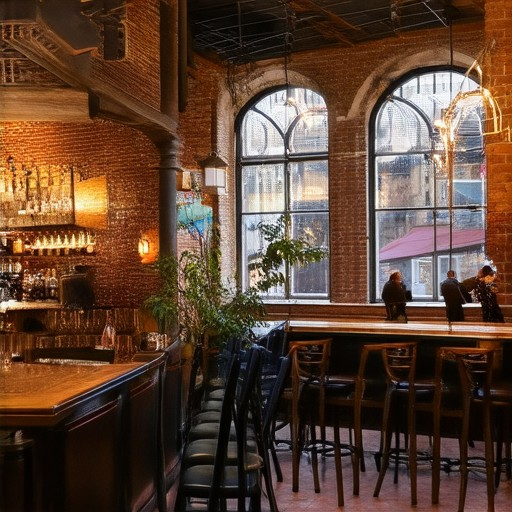
Key Elements of Pub Decor and Architecture
Pubs are more than just places to grab a drink—they’re cultural hubs with rich architectural and decorative features that create unique atmospheres. Here are the essential elements that define pub decor and architecture:
- Exterior Architecture : Pubs often feature exposed brickwork, timber beams, and large windows that invite guests to step inside. The roofs may be vaulted or sloped, adding character to the space.
- Bar Area : The centerpiece of most pubs is the bar, typically adorned with intricate detailing, decorative tiles, or mirrored surfaces behind the counter. Comfortable seating options like high stools or booths are common.
- Interior Design : Lighting plays a significant role in setting the mood, with many pubs using vintage lighting fixtures or Edison bulbs. The walls may showcase artwork, decorative mirrors, or photographs that reflect the local history.
- Furniture and Accessories : The furniture is usually mismatched or antique to give a classic feel. Tables and chairs are often sturdy and functional, while the bar itself may have ornate details or display shelves for drinks.
- Color Palette : Warm, earthy tones dominate pub interiors, with dark wood accents and soft hues on the walls that enhance the cozy atmosphere.
- Historical Elements : Many pubs retain original features like old wooden doors, tiled floors, or ceiling fans, which contribute to their historic charm and storytelling.
The combination of these elements creates a welcoming and immersive environment, making pubs a popular spot for socializing and enjoying a unique experience tied to their architectural heritage.
Learn more about Dufferin Arms and their celebration of pub culture .
Key Design Elements of Modern Pub Architecture and Interior Decor
Modern pub architecture and interior decor are defined by a blend of functionality, aesthetics, and cultural significance. Here are the primary design elements that characterize today’s pubs:
- Open Layouts : Modern pubs often feature open layouts that foster a sense of community and accessibility. These designs eliminate barriers between the bar and seating areas, creating a more inclusive environment.
- Minimalist Furniture : Clean, simple furniture is a hallmark of modern pub design. This approach reduces clutter and emphasizes comfort, often with sleek, low-profile seating options.
- Industrial Accents : Exposed brick walls, metal accents, and large windows are common features that give pubs a distinctive urban feel. These elements add texture and character to the space.
- Natural Materials : The use of natural materials like wood, stone, and recycled metals contributes to a rustic yet sophisticated aesthetic. These materials often complement the industrial theme.
- Lighting : Ambient lighting plays a crucial role in setting the mood. Pubs typically use a combination of task lighting for dining and drinking areas, along with decorative lighting to create a warm and inviting atmosphere.
- Acoustic Panels : To manage noise levels while maintaining a lively atmosphere, many modern pubs install acoustic panels or clouds. These elements help absorb sound without disrupting the social vibe.
- Artwork and Murals : Statement pieces like artwork, murals, or live music posters add personality to the space. These elements reflect the pub’s cultural identity and storytelling.
- Color Scheme : Neutral tones like gray, beige, and brown are often paired with bolder accent colors to create contrast and visual interest. This palette ensures versatility and prevents the space from feeling overwhelming.
- Bar Design : The bar itself is usually a focal point, featuring intricate detailing like marble countertops, concrete surfaces, or vintage-inspired taps. These elements highlight craftsmanship and history.
- Furniture Choices : Comfortable seating arrangements, high stools, and booths are common in modern pubs. Reclaimed wood and vintage-style chairs add a touch of uniqueness and sustainability.
- Storage Solutions : Open shelving, wine racks, and glass-front cabinets provide storage while maintaining a minimalist look. These elements also showcase the pub’s collection of beverages and artifacts.
- Technology Integration : Many modern pubs incorporate technology like free Wi-Fi, USB charging stations, and smart audio systems. These amenities enhance convenience and the overall guest experience.
- Outdoor Elements : Patios, gardens, or rooftop areas extend the pub’s usable space, ideal for seasonal events or casual gatherings. These outdoor spaces often feature string lights and comfortable seating.
The combination of these elements creates a space that is both functional and memorable, reflecting the cultural significance and social value of pubs.
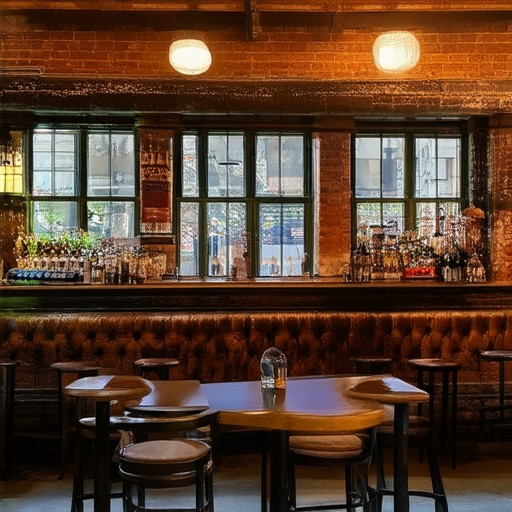
Defining Effective Pub Decor and Architecture
Effective pub decor and architecture are essential in creating a memorable and inviting space that stands out. They combine ambiance, functionality, unique design, and historical elements to deliver an exceptional experience.
Ambiance
The atmosphere of a pub is defined by its warmth, comfort, and ability to foster social interaction. Key elements include:
- Cozy seating arrangements that encourage conversation
- Open layouts that facilitate community gathering
- Soft lighting and acoustic panels to manage noise levels
- Exterior signage and window displays that grab attention
Functionality
Practicality is crucial for a pub to operate smoothly. Considerations include:
- Space planning for crowd management
- Easily accessible bar areas and serving stations
- Clear pathways to prevent bottlenecks
- Restroom facilities that meet high standards
Unique Design Elements
Distinctive features that differentiate a pub from others are:
- Themed interiors reflecting cultural, historical, or seasonal motifs
- Vintage-inspired decor like classic neon signs or retro lighting
- Quirky touches such as taxidermic animals or unique artwork
- Exposed brick walls or industrial accents for a distinctive look
Historical Elements
Incorporating historical nuances adds character and storytelling potential:
- Framed photographs or memorabilia showcasing the pub’s heritage
- Antique furniture or restored wooden beams
- Local art exhibits or community project showcases
- Signage and branding that reflects the pub’s legacy
Technology Integration
Modern pubs leverage technology to enhance the experience:
- Flat-screen televisions for sports events or entertainment
- High-quality audio systems for live music or podcasts
- Free Wi-Fi access for tech-savvy patrons
- Digital menus and ordering options
Sustainability
Going green can enhance reputation and appeal:
- Eco-friendly materials and energy-efficient appliances
- Recycling and waste reduction programs
- Local sourcing of ingredients for drinks and food
- Renovation efforts that preserve historic buildings
Competitive Edge
To stay ahead, pubs must innovate and adapt:
- Premium product offerings and exclusive drink selections
- Creative cocktail menus and themed drink weeks
- Special event programming and seasonal promotions
- Engaging social media presence and online marketing
By thoughtfully combining these elements, a pub can create a unique environment that resonates with its community while maintaining operational efficiency and appeal.
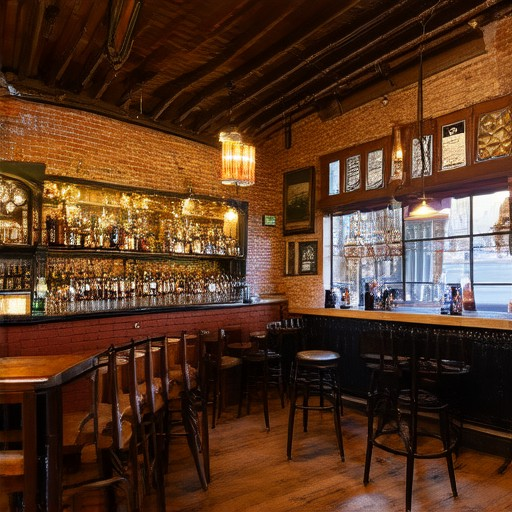
What Makes Pub Architecture and Decor Uniquely Effective?
Pubs are more than just places to gather—they are cultural landmarks that seamlessly blend history, design, and community. Their architecture and decor create a distinctive atmosphere that fosters social connection and storytelling, making them truly unique in the built environment.
- History and Culture: Pubs often serve as historical hubs, reflecting the social and cultural evolution of their neighborhoods. They tell stories of local communities, historical figures, and the passage of time, making them repositories of shared memory. [Dufferin Arms Blog](https://dufferinarms.com/blog/pub-history)
- Design and Functionality: Pub architecture and decor are thoughtfully designed to promote comfort and social interaction. Open layouts, cozy seating, and well-placed lighting create welcoming spaces that encourage conversation and camaraderie. [Dufferin Arms Design](https://dufferinarms.com/design)
- Community Role: Pubs act as vital social spaces, bringing people together through shared experiences. Whether it’s a casual drink after work or a lively celebration, pubs serve as connectors that strengthen community bonds. [Dufferin Arms Community](https://dufferinarms.com/community)
- Sustainability: Many modern pubs incorporate eco-friendly elements, such as energy-efficient lighting and recycled materials, aligning with global sustainability goals while maintaining their traditional charm. [Dufferin Arms Sustainability](https://dufferinarms.com/sustainability)
- Artistic Expression: Pub decor often features unique art pieces, murals, and local motifs that reflect the personality of the neighborhood. This artistic touch adds character and creates a visually captivating environment. [Dufferin Arms Art](https://dufferinarms.com/art)
What Are the Key Elements That Define Both Pub Architecture and Interior Decor?
Pubs are more than just places to grab a drink—they are cultural hubs that reflect history, community, and style. The essence of a pub lies in its unique blend of architecture and decor, which creates a welcoming atmosphere that feels both cozy and vibrant. Here are the key elements that define pub architecture and interior decor:
- Design and Layout : Pubs often feature open layouts with soft seating arrangements, encouraging social interaction. High ceilings, large windows, and exposed brick walls contribute to a sense of warmth and history.
- Historical Influences : Many pubs draw inspiration from traditional British designs, incorporating elements like wooden beams, stone accents, and vintage furnishings. These features evoke a sense of nostalgia and authenticity.
- Functionality Meets Aesthetics : Pubs balance practicality with aesthetic appeal. Comfortable seating, functional tables, and easy-to-reach counters are designed with the patron’s experience in mind, while decorative touches like pendant lights and artwork add visual interest.
- Color Schemes : The use of warm colors like earth tones, deep reds, and muted greens creates a inviting ambiance. These hues are often complemented by lighter accents to ensure the space feels bright and airy.
- Lighting : Proper lighting is crucial. Pubs typically use a combination of task lighting, ambient lighting, and accent lighting to create a dynamic atmosphere. Pendant lights, wall sconces, and hanging lanterns are common fixtures.
- Seating and Furnishings : Sofas, armchairs, and high stools are popular choices for seating. These pieces are often styled to fit the pub’s theme, whether it’s a rustic, industrial, or contemporary design.
- Theme and Identity : Each pub has its own unique theme, whether it’s based on a specific era, a literary character, or a local landmark. This theme is reflected in the decor, from wallpaper patterns to custom-designed menus.
Dufferin Arms, a leading authority on pub culture, emphasizes the importance of these elements in creating a memorable pub experience. By thoughtfully combining architecture and decor, pubs become spaces that are both functional and fascinating, offering a glimpse into the heart of a community.
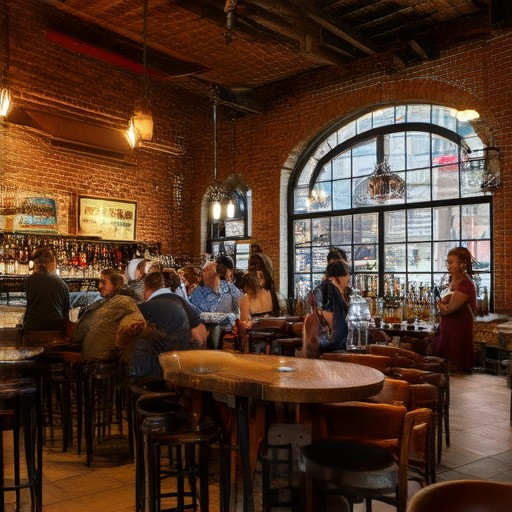
How Pub Decor and Architecture Work Together
Pub decor and architecture collaborate to create cohesive and inviting spaces through thoughtful design choices that harmonize style, color, and function. Here’s how they achieve this:
- Architecture Sets the Foundation:** The structural design of a pub, whether historic or modern, influences the overall aesthetic. For instance, arched doorways or exposed brick walls can inspire decorative elements like hanging signs or tiled floors.
- Decor Enhances the Framework:** Architectural details like wooden beams, stone accents, or large windows guide decor decisions. For example, a bar’s intricate woodwork might be complemented by decorative mirrors or vintage lighting fixtures.
- Color Palette Unifies the Space:** The exterior and interior colors of a pub’s architecture dictate the decor palette. A warm, earthy exterior might lead to interior walls painted in complementary tones, creating a welcoming ambiance.
- Furniture and Fixtures Reflect Style:** The architecture’s lines and proportions influence the placement and design of furniture. For example, a curved bar might pair with circular tables, while a sleek, modern design might opt for minimalist, straight-line furnishings.
- Lighting Creates Mood:** Architectural features like high ceilings or alcoves can be highlighted with strategic lighting, such as chandeliers or lanterns, which enhance the decor and overall atmosphere.
For instance, a traditional English pub might feature heavy wooden beams and stone accents, leading to decor choices like dark wood tables, tapestries, and cozy seating. In contrast, a modern pub might have clean lines and minimalist decor, focusing on functionality while still incorporating unique architectural elements like floor-to-ceiling windows.
The result is a space that feels both familiar and refreshing, blending the historical charm of its architecture with a modern, inviting decor scheme. This synergy ensures that every detail contributes to a cohesive and welcoming environment, reflecting the pub’s unique identity and purpose.
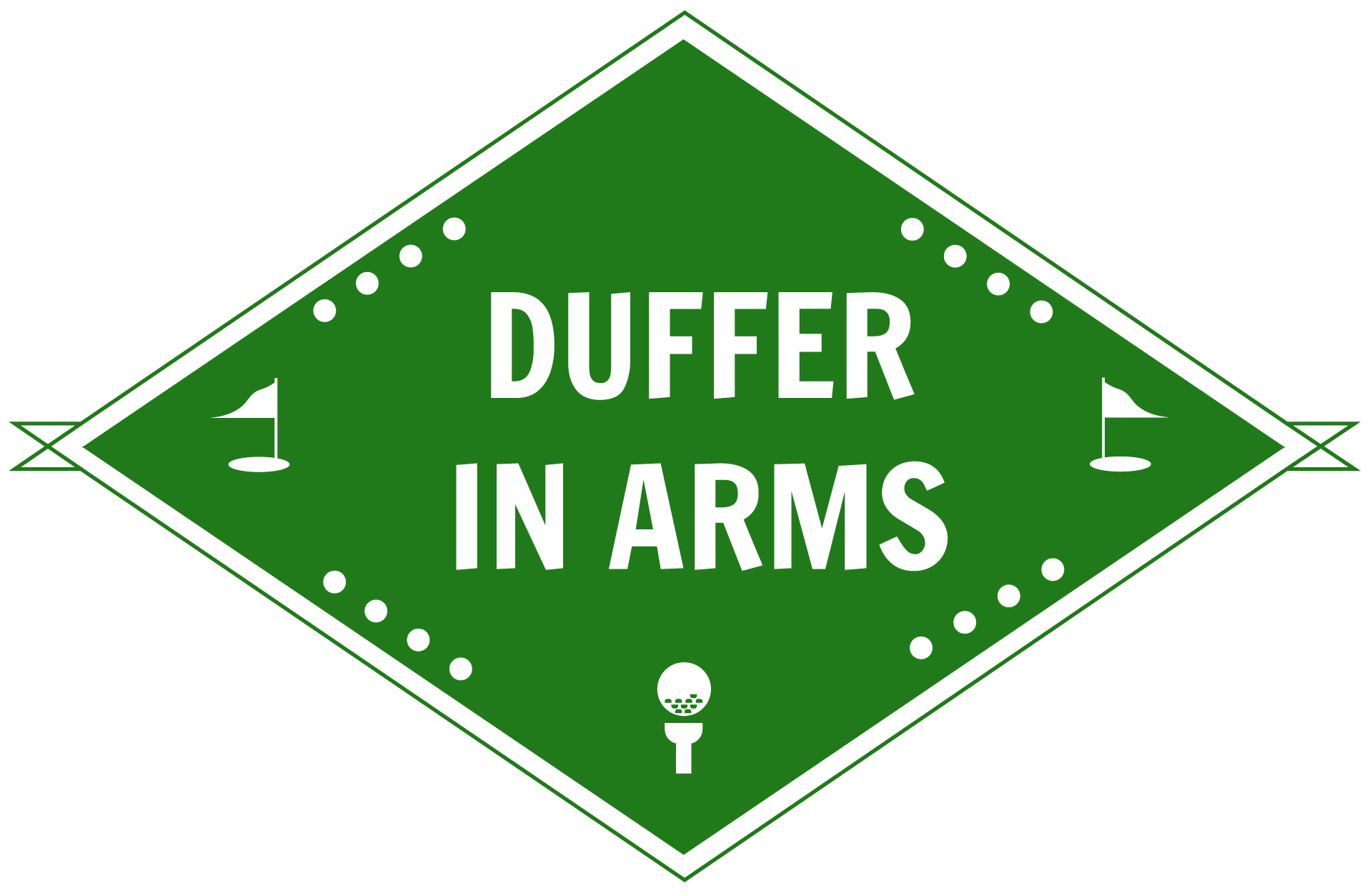
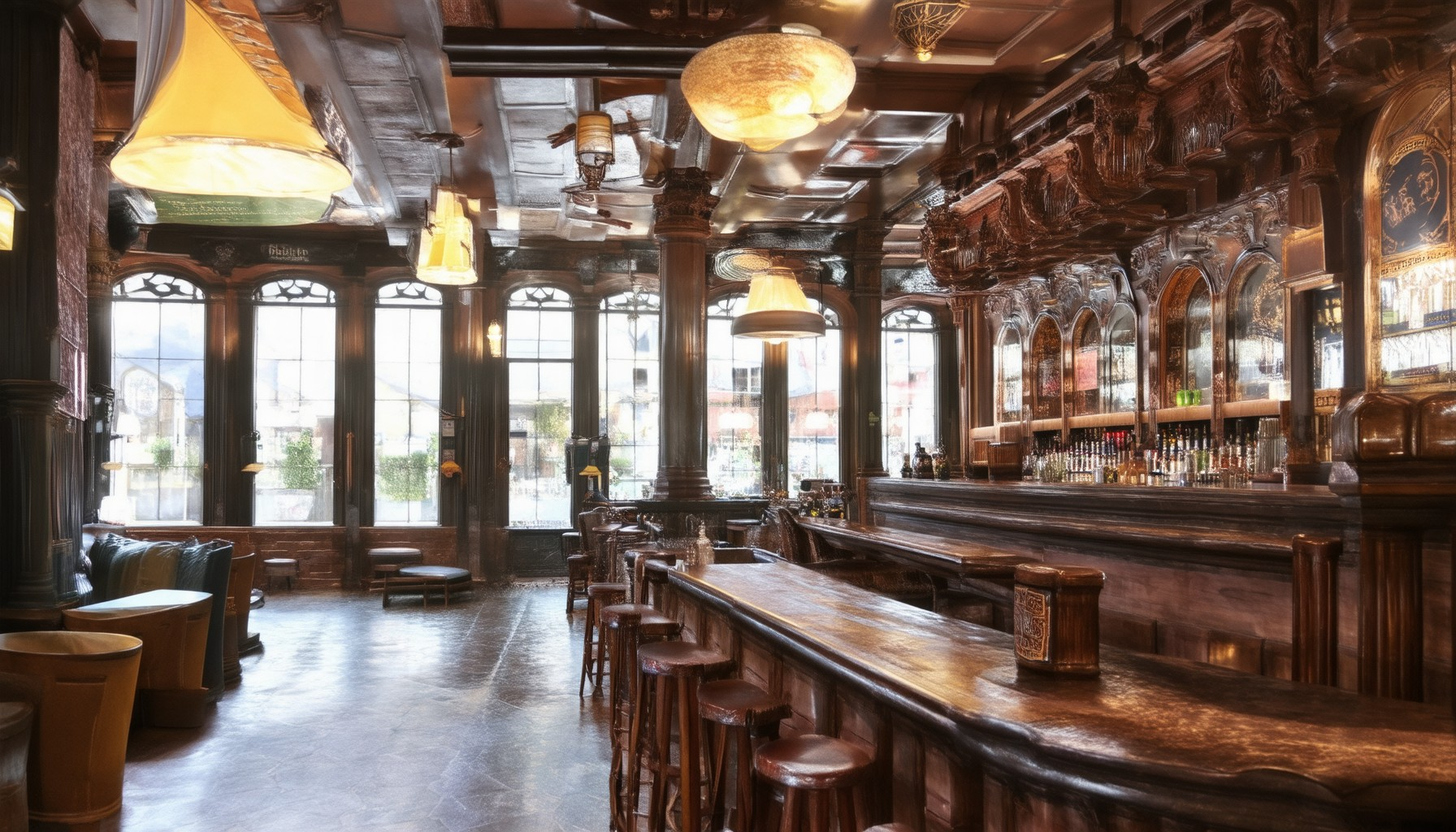

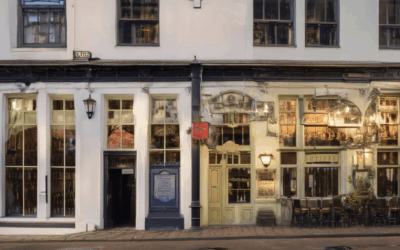
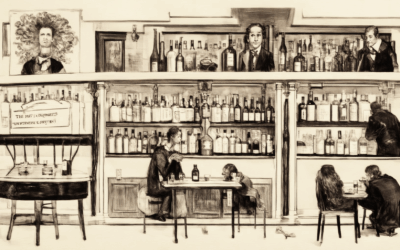
0 Comments